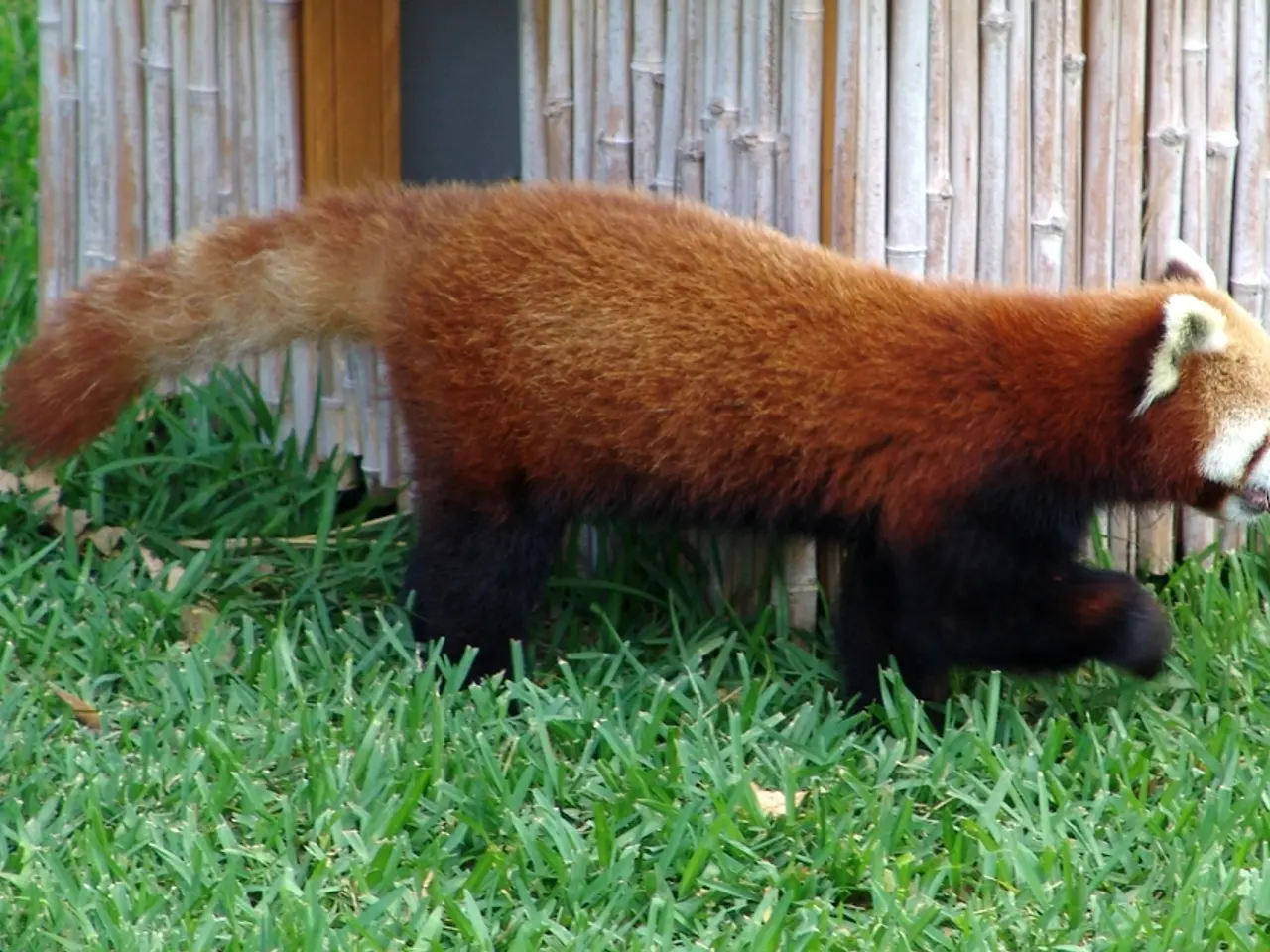Newborn Red Pandas Spotted at Sikkim Zoo after 7-Year Hiatus: Essential Facts Unveiled
Red Pandas Spotted at Lower Altitudes and Successful Breeding in Sikkim
Red pandas, typically found at higher elevations, have been spotted at lower altitudes around 1,800 metres, expanding their known habitats. This intriguing discovery adds to the ongoing conservation efforts in the Eastern Himalayas, particularly in regions like Sikkim and Darjeeling.
In a significant development, the Himalayan Zoological Park near Gangtok in Sikkim has successfully bred two red panda cubs for the first time in seven years. The Sikkim Zoo, India's oldest red panda conservation centre, runs an active Red Panda Conservation Breeding Programme since 1997. The programme was strengthened in 2005 with the introduction of Lucky (II) and Ram, both of wild origin.
The cubs were born on 15 June 2025 to red pandas Lucky (II) and Mirak. This birth marks a significant milestone, indicating recovery in the captive population and renewed hope for the programme’s success. The Sikkim Zoo is the only zoo in India specializing in high-altitude Himalayan animals.
Red pandas prefer mixed deciduous and conifer forests with dense bamboo undergrowth. However, their specialized habitat requirements make them vulnerable to environmental changes. The red panda is currently listed as Endangered on the IUCN Red List of Threatened Species, facing a high risk of extinction in the wild due to human-driven threats such as habitat loss, poaching, and human interference.
To combat these threats, conservation efforts in the Eastern Himalayas focus on strengthening habitat protection through community involvement and boosting populations through scientifically managed captive breeding programs. One such initiative is the Community-Based Forest Guardian Programs, primarily highlighted in eastern Nepal but serving as an important model for the broader Eastern Himalayan region. The Red Panda Network trains local Forest Guardians to monitor red panda populations, prevent poaching, and collect scientific data to inform conservation.
Similar efforts have roots tied to the Padmaja Naidu Himalayan Zoological Park in Darjeeling, which contributed foundational red pandas used in breeding initiatives to maintain genetic diversity. The programme maintains national and international studbooks coordinating global conservation efforts.
Other ongoing threats include habitat fragmentation caused by road construction and feral dog attacks, which conservation teams are actively seeking to mitigate. The data collected by Forest Guardians and breeding centers informs evidence-based strategies for habitat protection and species recovery.
Visitors can see red pandas at the Himalayan Zoological Park in Gangtok, Sikkim, providing an opportunity to witness these unique creatures up close while supporting conservation efforts. The range of the red panda includes India's Sikkim, Arunachal Pradesh, and the Darjeeling and Kalimpong districts of West Bengal, as well as the mountainous areas of Nepal and Bhutan.
In addition to captive breeding programs, conservation efforts also include the development of sustainable economic alternatives like ecotourism and handicrafts to reduce forest dependency. These initiatives not only support local economies but also promote conservation by creating a vested interest in preserving red panda habitats.
The birth of the red panda cubs at the Himalayan Zoological Park is a significant step forward for the zoo's Red Panda Conservation Breeding Programme and a testament to the ongoing efforts to protect these fascinating creatures.
Home and garden enthusiasts could be enthralled by exploring Sikkim's beautiful landscapes, rich in red panda habitats, contributing to a unique lifestyle experience in harmony with nature. The Sikkim Zoo, renowned for its red panda conservation efforts, also offers insights into the preservation of high-altitude Himalayan animals, promising an enlightening home-and-garden adventure for nature lovers.




